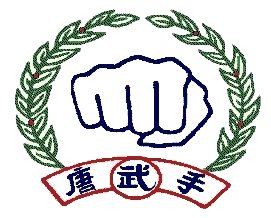

Some people may find this a bit controversial, but it is just an observation and one person's opinion. This article is meant in no way, what so ever; to offend or disrespect any person's mentioned. The answer to my question, to find the origin of Tang Soo Do, is still out there somewhere, waiting to be discovered. I have found many different stories ranging from the Art starting in the 4th Century by an Indian traveller/priest (Bodhidharma), who taught the Chinese Monks a set of exercises/techniques to allow themselves to protect themselves and, indeed, travelling to Korea teaching their techniques, to the development of an ancient Korean Art called Soo Bahk developed and used in the age of Chun Chu in China about 2200-2700 years ago and discovered in the Moo Yei Do Bo Tong Ji (written in1790). There are also stories that the art was started in the 1940's after the Japanese occupation had ended. I suspect that the start of Tang Soo Do in it's own right was in 1945 after a long period of suppression of the Korean Martial Arts by the Japanese, but in saying that I believe that Tang Soo Do is also culmination of many styles dating back to ancient times, but that is just my opinion. It seems that nobody can make up their mind on the origin of the Art form, maybe Tang Soo Do does indeed, stem from the 4th century from a traveller, maybe it is even older, or developed independently from the Ancient Korean soldiers, the Hwarang (Flower of Youth). I hope to gather the stories together to see if a common ground can be found in respect to the origins of Tang Soo Do. One thing I am sure of is that the origins of Tang Soo Do are indeed obscure, a lot being lost in translation and political beliefs (or should I say what style you study!). I have found that varying styles have a different beginning (which is obvious) but, historically, it seems that if you study Tang Soo Do then Tang Soo Do is the oldest and the fore-runner of modern day art forms, but if you study Tae Kwon Do then that is the origin for all the differing Korean Styles today, and so on through the numerous arts, a controversial statement, I know, but sadly true. I have also read stories, that I think come nearer the truth about many Martial Art forms circulating the globe today, that Tang Soo Do is based on 60% of the art of Soo Bahk Do, 30% Northern Chinese Kung Fu and 10% Southern Chinese Kung Fu. This to me seems to be more realistic, on looking at the way that certain techniques repeat themselves throughout the world of Martial Arts, and there are certain kata/hyung are named and look quite similar, it seems that all Martial Arts are hybrid forms, from varying countries of the Orient, developed over the years from style to style. Development of the Arts continues today as strongly as it did in the early days, and it makes one wonder what the art forms will be like in another 2000 years time. But this, small reflection, still does not answer my original question, what is the exact origin of Tang Soo Do, and who is right? The following few pages containing a collection of stories, from varying sources, depicting the origins of Tang Soo Do. The stories range from a travelling warrior/priest to the Japanese occupation of Korea in the early 20th Century Bodhidharma Bodhidharma was a disciple of the priest Prajinatara, who later became the 28th descendent of Skaka (the founder of Buddhism). Bodhidharma was a colourful character; Chinese writers refer to him as the "blue-eyed barbarian. " He is often depicted as a balding man with a beard, potbelly, and blue eyes. He was most probably born in Kanchipuran (near Madras), India. He was probably the son of a lesser member of the warrior caste, but there are some indications he may have been of the mixed priest-warrior caste "Brahaman-Kshyatriya"; the clue being his Caucasoid features. Although heir to a throne, Bodhidharma chose the life of a religious devotee. After the death of Prajinatara, Bodhidharma became dissatisfied with the way Buddhism was being taught outside India and the loss of the true faith in China. In 520 AD, he travelled from India to China to teach them the true path; a very rugged journey that required excellent physical fitness and stamina. Bodhidharma travelled to the court of King Liang Wu Ti, ruler of one of the kingdoms established during the Six Dynasties Period, who was reputedly a great patron of Buddhism. However, since the King's Buddhism was based on salvation and form, he did not understand Bodhidharma's Buddhism that stressed meditation, intuitive insight, and attainment of perfect enlightenment on earth. This led to Bodhidharma's expulsion from the King's court and the entire kingdom of Liang. Eventually, Bodhidharma travelled to the kingdom of Wei where he was invited to teach King Myong-je. Bodhidharma refused the offer and obtained permission to reside at the Shaolin-ssu (Shorin-ji in Japanese) Monastery, in Tungpung County, Honan Province, in the Hao Shan Mountains. Legend has it that, after arriving at the monastery, Bodhidharma meditated Yoga style for so long that he lost the use of his legs. Bodhidharma taught a form of Zen Buddhism, which aims to create a state of grace by sudden illumination (satori). Asceticism and meditation in sitting positions for long periods of time are the two main Zen practices. Bodhidharma found the monks at the monastery were in poor physical condition due to their inactivity and thus were unable to meditate for a long period. It is said that many monks died as result of the harsh training sessions. Therefore, he undertook a program to strengthen them. He taught them the system of integrated physical and mental discipline embodied in the Indian I-Chin-Sutra that he had been taught as a youngster while a member of the Kshatriya. As references, he used two books on military arts that he had brought with him: the I-ching (Book of Changes) and the Hsien-sui-ching (Book of Divination). To strengthen the monks, Bodhidharma added physical and mental training methods that were gradually refined into self-defence techniques that the monks could use to protect themselves against highwaymen. These methods were outlined in the books I-Jin Kyong (muscle development) and Si Shim Kyong (mind cleaning). Since ordinary physical exercises conditioned the body but not the mind, he devised a series of 18 movements that imitated the posture of the 18 different temple idols. When performed perfectly, these movements would give the performer the experience of enlightenment. These exercises, which gained popularity in the region, became known as the "18 Hands of Lohan." These 18 simple movements are purported to be the basis of Shaolin Boxing. Over time, the Shaolin monks expanded the 18 Hands of Lohan into what became known as "Chaun-fa (the fighting techniques of Shaolin). This art eventually developed into what we today call "T'ang Shu" (Tang-Soo in Korean). Bodhidharma's impact on the martial arts was great, but his contribution to religious development in the Far East is immeasurable. His doctrine, along with his exercises (the 18 Hands of Lohan), is recorded, at least partially, in the Chinese classic, I Ching (Book of Changes), which was most probably written by one of Bodhidharma's disciples. Bodhidharma is reputed to have passed away at the ripe old age of 150 years, making his approximate time of death between 630 and 660 AD. For centuries, Bodhidharma's techniques were passed down and only taught in strict secrecy by monks to other monks. Students were told that nothing they were taught was to be altered or left out. Students were not told the importance of what they were learning, since it was believed that each student must experience the importance of his teachings for himself. Eventually, invaders drove the monks out of temples and the temples were burned. The monks spread throughout China, spreading their teachings amongst the Chinese populace. Many styles of empty-hand fighting existed in China before Bodhidharma arrived, but he gave the activity its underlying basis of spiritualism. It may seem odd that a non-violent monk would develop a fighting system. However, no documentation exists that Bodhidharma intended his system to evolve into an offensive art. He merely wanted to improve the fitness level of the monks at the monastery. The T'ang Dynasty The T'ang Dynasty (618-907 A.D.) witnessed a great rise in popularity for the Shaolin Temple and its arts. It was during this period that the monks first served a military purpose and became, in affect, a special detachment of the Imperial Army. In quelling internal uprisings and resisting many different invasions, the inhabitants of the Shaolin were rewarded with many honours, citations and huge amounts of land. On this land many temples were built, the first was the second Shaolin in the Fukein Province. Priests, soldiers, statesmen and scholars, while visiting and studying at these Chinese monasteries, were undoubtedly exposed to Chan-Fa and returned to Korea, Japan and the Ryukyu with the seeds of what would soon be their own native arts. Travelling Shaolin monks were responsible for the birth of several hundred styles of Kung Fu. They would teach Chuan-Fa to their family, friends and followers and they, in time, would alter and add on to the style, then call it whatever they wanted - usually after their family name. Japan, during this time, began to proliferate schools of wrestling and swordsmanship; these would later become Sumo and the arts of Kendo. The earliest forms of Kenjutsu are thought to have existed as early as the 6th century A.D. and were most likely developed from techniques exhibited by Buddhist monks and scholars relating what they had learned abroad. The antecedent of this was to be seen in the transmission of Ch'in Na from China to Japan in the early 900's A.D., becoming the basis for Aiki-Jutsu. In Korea, early developments in Taekyon and Subak, Hwarang Do (the ancient military art form) and Tang Soo Do, traditional Korean martial art with legendary influence by China (literally T'ang Hand Way) were interpretations of Wai-Chia, the external systems of Chuan-Fa. The northern external styles were known for their intricate kicking techniques.... and once these were combined with the spectacular acrobatics of the native Korean kicking arts, the two made for a formidable union. Hwarang Our martial art of Tang Soo Do (the way of the China hand) traces its origins to ancient times, when the Korean peninsula was divided into three kingdoms: Silla, Korguryo, and Baekche. Silla was suffering constant harassment from Japanese pirates. Responding to a request from the Sillan government, Korguryo sent 50,000 soldiers to drive the pirates away. These soldiers were trained in a martial art known as Tae Kyon, and they passed along this martial art to the Sillan warriors, who incorporated it into their military training. Silla assembled an elite fighting corps of young nobility called the Hwarang (Flower of Youth). In addition to regular military training, the Hwarang subjected themselves to rigorous mental discipline and severe physical hardship in order to achieve a harmonious existence of mind and body. The Hwarang lived by five codes of Human conduct, which are still the foundations of Tang Soo Do philosophy: o Loyalty to your country o Obedience to your parent's o Trustworthiness between friend's o Courage: never retreat in battle o Avoidance of unnecessary violence and killing Again, these may vary slightly depending on schools and associations. The practice of Tae Kyon was primarily restricted to the military and nobility until 1790, when the first book was written on the art. By this time, Tae Kyon had become known as Subak (or Soo Bahk) and the three kingdoms had united to form a single nation. During a long period of peace, the country turned its emphasis from the military to education, and with this cultural shift, the practice of Subak began to decline. What knowledge there was of the art was handed down within families from one generation to the next. Moo Duk Kwan Our Korean style of Karate is known as Tang Soo Do (which means "Art of the Knife Hand"). Over 1000 years ago, Korea, then known as "Koryo", was a nation divided into three sub-kingdoms: Koguryo, Silla and Paikche. There was a constant war between these sub-kingdoms until 668 A.D. Silla emerged victorious and united the three into one kingdom. The main contributing factor in Silla's victory was an elite corps of young warrior knights of noble birth who banded together with an extremely high moral code of loyalty and respect. These warrior knights were all experts in the practice of Hwa Rang, a sport involving foot fighting, which evolved into the martial art Soo Bak Do. Soo Bak Do flourished for centuries as the warriors defended numerous invasions from neighbouring countries. During this time, the art was passed on in secret from instructor to student, but in 1910, the Japanese invaded Korea and sought to ban martial arts as a way to preclude revolt by the Korean citizens, and many great instructors of the martial arts fled the country. One of these experts was Hwang Kee; a child prodigy of the Korean and Japanese influenced martial arts, who escaped at this time because of the threat of the occupying Japanese to discourage any martial arts practice and training. Hwang travelled to northern China where he quickly mastered "northern hard style" Manchurian karate. In the mid 1940's, the five original Korean Kwans (schools) were: Moo Duk Kwan, Chung Do Kwan, Yun Moo Kwan, Chang Moo Kwan, and Chi Do Kwan. Encouraged by Korean patriotism, all of the styles except one were combined into a new sport called Tae Kwon Do in 1955. Moo Duk Kwan remained a separate art called Tang Soo Do, and Grandmaster Hwang Kee is regarded as the father of Tang Soo Do. As you can see from these stories, there are some differing ideas: 1.Bodhidharma is seen by some people to be the fore-father of all Martial Arts 2.Korean soldiers are said to have been practicing Martial Arts long before the intervention of Bodhidharma 3.The name translation (knife hand way, way of the China hand etc) does not match From these comments, above, I would say, that Bodhidharma may well be the founder of a form of Martial Art, but not the overall founder of Martial Arts, as the second statement seems to say that forms of Martial Arts were around long before the intervention of Bodhidharma. As for the name translation I can only put that down to dual meanings of words and peoples perception of what words mean. It stands to reason that from the very dawn of mankind, there have been forms of self defence in operation, survival of the fittest etc, are these techniques, no matter how basic the true origin of the Martial Arts? It must be true that ancient/prehistoric tribes/clans defended themselves against each other, remembered and passed down the basic techniques to do this. For example high blocks, low blocks etc. They must also have developed their own styles, from tribe to tribe, province to province, country to country. These styles passed down the generations, developed over time into the styles we know today. So, was Bodhidharma taught some form of self defence passed down from his ancestors or did he develop totally knew techniques that he passed to the monks of China, who in turn taught these techniques over the area? It seems hard to believe that there was no form of self-defence technique (no matter how basic) at that time, and that one man came up with a complete system from scratch. Therefore I would tend not to agree with this story and go along with certain Chinese historians who dispute the claim that Bodhidharma brought Martial Arts to China. They point towards military manuals dating from 206 to 220 AD that clearly show that Han emperors promoted Kung Fu long before Bodhidharma's birth. The Hwarang seem to figure heavily in the development of the Korean Martial arts with their own developed style, but again this seems to differ from article to article, some will say they practiced Soo Bahk Do while others say Tae Kyon, again who is right? Are they both right? Did the Hwarang practice more than one style? One thing does, however, ring true with the story of the Hwarang warriors being a beginning of Tang Soo Do, and that is the 5 rules of the Ancient Hwarang's code of ethics, that are learned by Tang Soo Do students are the same. Some Hwa Rang Do practitioners today dispute the connections, to the original Hwarang, made by Martial Artists of varying styles. Once more we see a difference, in the opening paragraph of the Moo Duk Kwan story, firstly, there is a discrepancy in the translation of the name Tang Soo Do itself, in this version it is translated as "art of the knife hand" whereas in others it is translated as "way of the Chinese (or China) hand", again who is right? Reading the last two stories it is obvious that one (or both) is not quite right, the Hwarang story claims that the Hwarang used the style Tae Kyon and it later became Soo Bahk, but the Moo Duk Kwan story says that the Hwarang used a form of foot fighting that developed into Soo Bahk Do, was this Tae Kyon? There is also a mention that within the three kingdoms of Silla, Koryo and Paikche, there was a constant war going on between the three, in the Moo Duk Kwan story, but in the Hwarang story, there is mention that Koryo sent 50,000 troops to help Silla defeat the Japanese pirates, it seems funny and unlikely that an enemy of war would send troops in such a large number to help their opponents. On my brief travel around the ancient world of Korea (not physically) and my very basic understanding of human nature I have came to the following conclusion. About 2,000,000 years ago, early man was fighting for survival, often mimicking the animals around them, and also developing their own survival skills. Moving into the "stone age", approximately 1,000,000 years ago, more advanced cultures consciously began to develop techniques to protect themselves. Throughout the "iron age" (10,000 - 2,000 years ago) the techniques were improved and built upon in the various civilizations of the time, to provide a strong basis for the Martial Arts we know today. Through time these skills have been honed into the fighting arts to be found all over the world today, and no doubt with the expansion of the world population, these styles of basic survival techniques have been shared from area to area. Innocent travellers and traders, conquering armies and indeed religious people, could have passed on these skills. With Korea's troubled history of invasion and occupation from the likes of the Chinese, Mongols and Japanese, it is very likely that more styles and techniques would have been introduced to the existing styles of the Korean people. With the invasions would also have come a change in belief, constitution and governing bodies that would have forcibly introduced their fighting styles and suppressing the styles of the native people, therefore, losing some of the traditional aspects of the fighting arts. Official rules and books have been published in regard to these arts and the history behind them, but with so many historical books, how many are actually the real story or massive exaggerations on the truth. How many of the books, manuscripts etc, has been lost in translations throughout the ages, a massive game of Chinese Whispers. There can be no doubt that the original styles have been developed into very efficient self defence techniques over the numerous years since the very first high block, military factions using and developing these skills further to form the basis for the Modern Day martial arts. This development is still on going today, new understandings of the moves and techniques, enlightenment into the internal and external energy (Ki/Chi/Qi) fields surrounding everyone of us, tuning one's body and mind into these forces. There is always something new on the horizon, nobody can say that they know everything about the style they practice, and it is up to everyone from Grandmaster to White Belt to find these new concepts of the arts to their fullest. As for the origin of Tang Soo Do, who can say, only those who first gave their way of self-defence a name whether it be Soo Bahk Do, Tae Kyon, Kwon Bop, or whatever. Is the founder of Tang Soo Do the person who, simply, named the art or the very first person to defend himself from an opposing tribes attack? It is quite clear that somewhere along the line styles have come together to form n integrated, highly effective style, for example the forms of Shotokan and Tang Soo Do are very similar to have been developed separately and no doubt in further research I will find the meeting point of the two styles. I suspect the Japanese occupation of Korea in the early 20th century, and the suppression of the practice of Korean Arts has much to do with the integration of the Shotokan similarity. Capoeira is another fine example of a suppressed people learning and practicing a system of self-defence. So did the underground practitioners of Korean Martial Arts integrate the Shotokan techniques into an already effective style? Did they take the entire Shotokan style and "reinvent the wheel" changing it to suit their needs? If we follow the name itself, and the techniques as we know them today the credit, in my opinion, goes to Hwang Kee when he founded the Moo Duk Kwan after the Japanese occupation. (as mentioned earlier) If we follow the origins of Korean Arts I would say the specific origin and founder of Tang Soo Do was nature itself. Some people may ask, why do we need history/origins, why do we need to know what the people did all those years ago, surely the only way is forward, why look back etc etc etc. Why indeed, some may agree, why to we need to know where we came from, as Martial Artists, we only want to know what lies ahead. Valid points, possibly, but without this history and people researching the origins, who is to say that important information relating to the arts has not been lost. There may be hidden techniques lurking in some temple, somewhere, there may be original documents stored in that same temple releasing the knowledge lost for years about varying styles. As mentioned earlier, the Martial Arts are changing with each generation; there is a certain level of "artistic licence", as with the origin stories, involved from instructor to instructor. This partly explains the numerous associations, styles etc. I think I could safely say that this would be the same throughout Martial Arts, each instructor teaches things slightly differently, the same technique but with subtle differences. Even in my comparatively short time in Martial Arts, I have seen techniques change, forms and patterns change and indeed new associations formed. How do varying styles stay new and exciting to new (and old!!) students? Is it the expectation of one day obtaining the Black Belt alone? Or is there something more, is it the constant changes, new ideas, new techniques, and the constant twisting and turning of the arts? If for a moment you think of Martial Arts as ripples on a pond…the first ripples are close together, reaching out gathering momentum. The first ones are original, pure and unblemished, as the ripples move further out into the pond, they change slightly, they may get bigger, pick up different things on the way, but essentially they are the same. As the ripples travel they affect everything they touch. In my opinion it is just as important to know where your roots lie as it is to know where you are going in life and in the world of Martial Arts. |
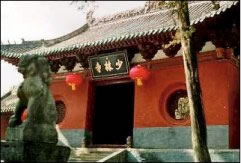
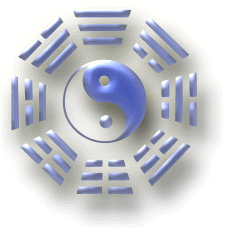
ARTICLES Origins of Tang Soo Do |

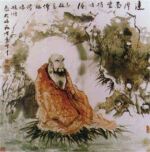
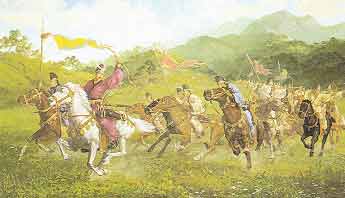
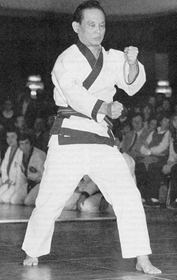
Who is right? by Robert Bass |